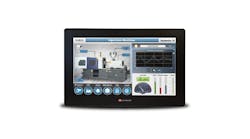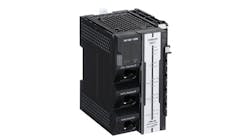By Manny Mandrusiak, OPC Marketing, and Nathan Pocock, Director of the OPC Test Lab.
The title of this article is an extremely valid question for all readers looking for data connectivity? What is OPC in 2010? OPC is still the connectivity standard for Process Control, for ADI, a part of FDI and FDT and STILL the connectivity standard for manufacturing, and PLCs. OPC is a Unified Architecture, and OPC is an Express Interface.
OPC is three letters that are a lot of things to a lot of different people, but what it really boils down to is moving data and the Tag. Yes the Tag. Everything in OPC revolves around the Tag.
What is a Tag?
A tag is a single data-point. The Tag has a slightly different meaning in each OPC specification:
- Data Access: can represent an output coil on a PLC, or a memory register in a device etc providing real-time access to the data value, while providing a timestamp and Quality.
- Alarms & Conditions: the Tag represents an entity providing details of any conditions that raised an alarm event including location information and details of who has done what with the alarm.
- Historical Data Access: an extension of Data Access except now the information is historical instead of real-time and can be used to observe behavior trends for reporting etc.
Each OPC specification has taken the "Tag" to a whole new level of meaning. But does this trend continue with the newer OPC specifications and if so, how does that translate into benefits?
Breaking down the complexity
The problem with technology is that the simplest things are often over engineered and appear complex because of a passion for the engineering details. Life is complex enough, and architecting a future-facing communications platform has enough complexity in it without added clutter, but as mentioned earlier, no matter which specification you are using it is still all about the Tag! Whether you are Reading, Writing, Subscribing to, or browsing them. At this time it is prudent to break OPC technology down into the three implementations that consumers will identify with in 2010, which are: OPC Classic, OPC Express Interface (OPC Xi), and OPC Unified Architecture (OPC UA).
OPC Classic – The Golden Age of OPC
OPC Classic is a Client/Server technology based on Microsoft COM/DCOM. Born in 1996 the first OPC specification defined a common interface for plant systems to be able to exchange data without costly proprietary solutions being written. Now dubbed the "OPC Classic Data Access" specification, this revolutionized the manufacturing industry by enabling the transfer of a Tag's Value, Quality, and Timestamp in real-time!
The quick adoption of OPC DA led to the development of a plethora of OPC Classic Specifications including: OPC Historical Data Access (OPC HDA), OPC Alarms & Events (OPC A&E), and OPC Security, just to name a few.
Complete product lines emerged with a multitude Clients and Servers to provide robust connectivity between disparate systems, and different domains delivering on the promise of being able to implement "best of breed" products from different vendors with seamless interoperability. Products such as: Redundancy Brokers, Buffers, Tunnellers, Data Management Tools, Calculation Engines, Excel Tools and other interfaces were developed to provide Tags and OPC Products with even more abilities. A product such as a redundancy broker would provide a level of redundancy transparent to the OPC Client such that in the event of a communications failure where an OPC Server became unavailable, the redundancy broker would seemless switch to the secondary communication so that the values of the Tag can continue to be read by the client without interruption.
OPC Classic became the defacto standard for anyone looking to monitor and/or control their device and transferring it to their SCADA and/or higher plant level with Commercial off-the-shelf products.
Why an OPC Xi? – The move to .NET
Technology has never been known to stand still. As Microsoft migrated away from COM/DCOM communications in favor of WCF, so did the desire by vendors and end-users to do the same. OPC Xi was developed to help the aging OPC Classic move from the COM/DCOM platform and move towards WCF and.NET framework. End-users were looking for a connectivity solution that overcomes DCOM without the need for adding OPC products to their existing architecture. The Tag in Xi combines all of the abilities that each OPC Classic specification defined for a Tag.
OPC Xi provides users with the built-in ability to securely navigate a firewall without additional OPC products. Tag data can be accessed by using the OPC Xi specification as DA, HDA, and A&E, and can be accessed securely through a firewall with the built in WCF security bindings.
Who is the end-user that uses OPC Xi? OPC Xi is for the end-user who wants to develop OPC architectures in a strict Microsoft only environment, and where their needs are met using the same functionality offered by OPC Classic.
Key features of OPC Xi are:
- Client server data exchange
- Support for OPC DA, OPC HDA, and OPC A&E
- Secure real-time and historical data transfer
- Firewall Navigation
- Secure web service
OPC UA – The road to platform independence
OPC Unified Architecture is the next generation of OPC technology. OPC UA basically is "Tags on Steroids." It encompasses all of the functionality of all OPC Classic Specifications (OPC DA, OPC A&E, Commands, and Complex Data) and leaves room for additional functionality to be defined later. OPC UA is designed to be platform independent allowing UA to be also used in Non-Microsoft platforms enabling OPC (Servers and Clients) to be used/embedded in places/devices that were previously impossible. OPC UA will enable the lowest-level device to communicate directly with your enterprise level ERP system. OPC UA will provides end-users with scalable, and secure communications offering extremely high performance. The abstract design of the technology enables OPC UA to be used as the underlying implementation for which other protocols/standards can be based on, such as PLCOpen, BACnet, etc.
Key Features of OPC UA are:
- Platform Independent (Microsoft, Linux, and Embedded Devices etc.) for maximum scalability
- Secure service oriented architecture to ensure integrity and confidentiality
- High Performance
- Combined functionality of all OPC Classic Specifications
- Extensible architecture design
- Cross-industry capable
OPC UA is the only open standard that is designed to be usable in all layers of your enterprise from the small embedded device all the way up into your enterprise-level systems.
A Tag by any other name is still a Tag
Looking back, data from an OPC Classic Tag on was once ONLY available within the Windows platform; OPC Xi enables the Tag to enter the WCF/.NET space, whereas OPC UA can take the Tag cross-platform into whole new worlds. We have entered the era where a technician can respond to an alarm at the plant on their Smartphone, acknowledge the alarm, then securely log in and fix the problem remotely.
No matter how one looks at OPC technology there is only one thought that should arise and that is that your system needs OPC to remain on the competitive edge. Which flavor of OPC you choose remains based on your individual system needs, budget, and the vendor that you choose? When the rubber meets the road OPC is truly all about the tag, and OPC offers you a limitless number of possibilities of how you manage your own data around your enterprise.
For more information about OPC and the different OPC specifications, please navigate to www.opcfoundation.org.
Nathan Pocock entered the Automation Industry in 1995, leaving an IT admin position, to join Siveco UK - a Computer Maintenance Management System company - as a trainer and consultant. After leaving the UK for the USA in 1999, Nathan became a technology instructor at the ECPI College of Technology before re-entering the automation industry in 2001 working for Software Toolbox, and was heavily involved in product sales, marketing and support, web-marketing, before becoming the Chief Architect & Developer of software systems design and development. Nathan joined the OPC Foundation in early 2009 to lead the Compliance working group and launch the certification and testing program for OPC UA, located in Scottsdale, AZ. Nathan enjoys mountain biking, the UFC, and coaches 2 kids soccer teams.
Manny Mandrusiak entered the field of marketing after retiring from the Canadian Infantry in 2005. He was employed as the Sales and Marketing Manager for the Sherwood Park Chamber of Commerce, and then on to hold the position of Acting Executive Director. Recruited by MatrikonOPC to head up marketing for their OPC line of products, Manny has been responsible for all aspects of marketing standards based software to various industry verticals. Manny left MatrikonOPC to take a position with the OPC Foundation as Vice President of OPC Marketing. Headquartered in Scottsdale, Arizona, he also serves as the Director of Technology Marketing for the PTO (formerly the PROFIBUS Trade Organization). Manny is now dedicated to spreading both the OPC and PTO technology messages across the globe to all industry verticals. He has also held board seats on several other non-profit technology based societies and currently writes monthly columns for www.automatedbuildings.com and www.automationmedia.com.

Leaders relevant to this article:





